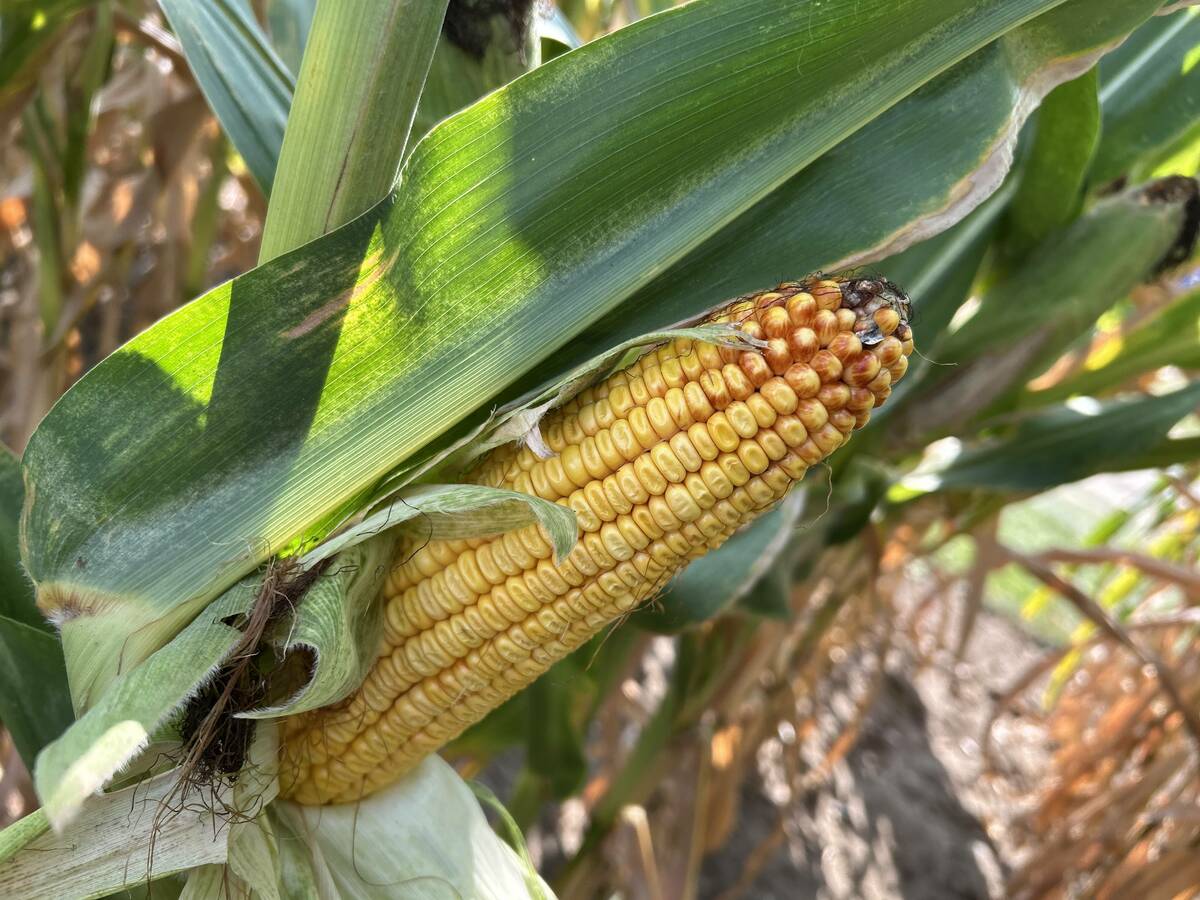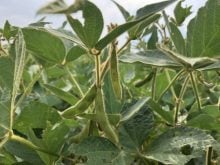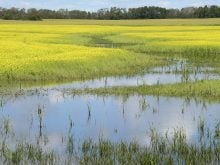Manitoba researchers are finding it might make more sense for organic producers to roll cover and green manure crops rather than discing or plowing them under.
During a recent tour of organic no-till experiments at the Ian N. Morrison Research Farm in Carman, Man., University of Manitoba plant sciences professor Martin Entz pointed to a thick mat of nitrogen-fixing legumes flatted into the soil surface by a bladed crop roller, a new tool invented by a farmer in Pennsylvania and recently introduced to the U of M’s organic research program.
Read Also

Crop estimates show mixed results
Model-based estimates used by Statistics Canada showed the 2025/26 crop year has seen increases in canola, corn for grain, oats and lentils production while seeing dips in spring wheat, durum wheat, soybeans and barley in comparison to 2024/25.
“The question is very important: why not disc or plow this stuff in?” Entz said.
The answer is weeds.
Entz said tillage is asking for trouble, not just from erosion but also from weeds that are churned to the surface where they can warm and germinate.
Conventional farmers would knock them back with herbicides, but that’s not allowed under organic rules.
Much like a chemical burn down, the crop roller flattens the crop, which browns off and dies.
The weight of the heavy steel roller and its chevron-patterned blades crimp the legume stems so that they break down to fertilize the next crop. Leaving the soil intact prevents interruption of mycorrhizal fungi action and the weed seed bank stays dormant under the surface. Also, soil moisture evaporation losses are minimized under the thick layer of dead plant material.
Entz said compared to the horsepower needed to pull a discer or plow, the roller takes little energy, which offers additional savings in fuel costs.
One concern with leaving the cover crop above ground is that significant amounts of nitrogen from the green manure could be lost to the atmosphere. To monitor this possibility, ammonia traps have been set up in one plot as part of a study by a graduate student to measure the losses.
“We know the answer is that you lose a little bit of the nitrogen to volatilization losses, but it doesn’t amount to much,” Entz said.
Rolling cover crops instead of tilling them into the soil is becoming more widespread. Entz said the Rodale Institute in Pennsylvania has mounted a bladed roller on the front of a tractor with a no-till direct seeder attached at the back.
“They roll rye and seed soybeans right into it,” Entz said.
Another non-herbicide solution might be to flatten the cover crop and incorporate it into the soil through hoof action by grazing ruminants on it, he added.
“I think grazing would be an excellent way to utilize this green manure. Just make sure that you distribute the urine with good grazing management so that it doesn’t all end up at the watering hole.”
Research at other plots is finding that some crops can be used to kill weeds. At the Carman research farm, a clean stand of rye with an estimated yield of 55 bushels to the acre could be seen in one large plot.
“Rye is a great organic crop because it kills weeds,” Entz said.
“It produces allelo-chemicals which reduce the germination of many broad-leafed weeds like red-root pigweed, lamb’s quarters and grasses like green foxtail.”
The researchers plan to harvest the rye and direct seed a legume into the stubble to provide nitrogen in the fall.
“From the time the rye matures until freeze-up, we can grow 40 pounds of nitrogen per acre, if we have rain,” he said, adding that suitable legumes for a fall cover crop could include black lentils, vetch or cowpeas.
Since nitrogen must be grown rather than bought under the organic system, Entz said the “nitrogen budget” is always considered when planning a rotation.
One rotation at the research farm begins with peas and oats, then spring wheat and soybeans, followed by a legume-based green manure crop and then flax and rye.
“You can design rotations in many different ways, but the important thing is that they provide enough nitrogen and have enough diversity to control pests.”
With fertilizer prices threatening to soar in coming years, the question is how much nitrogen is possible with green manure crops?
Entz said most organic researchers agree that 2.5 to three percent of dry matter is fixed nitrogen.
“So if you have 1,000 lb. of hay that would come off, that means you get 25 to 30 lb. of nitrogen. If it’s three tonnes, that’s anywhere from 75 to 90 lb. of fixed nitrogen.”
Growing peas and oats together stimulates the legume to produce more nitrogen, he added.
“We grow 4010 forage peas and mix a few oats in. Some people ask why? The reason is that it makes the peas work harder if the nitrogen is being mopped up by a non-legume plant.”














